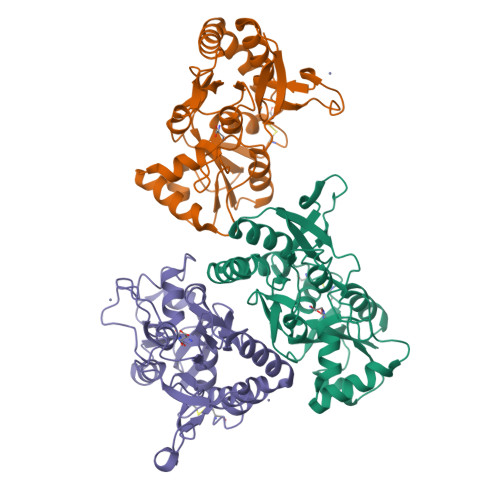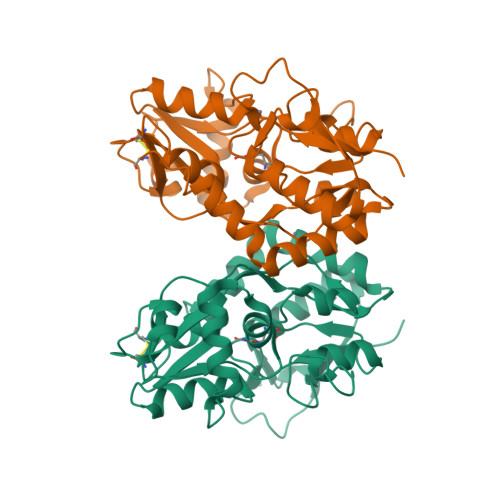Mechanism of Activation and Selectivity in a Ligand-Gated Ion Channel: Structural and Functional Studies of GluR2 and Quisqualate
Jin, R., Horning, M., Mayer, M.L., Gouaux, E.(2003) Biochemistry 41: 15635-15643
- PubMed: 12501192
- DOI: https://doi.org/10.1021/bi020583k
- Primary Citation of Related Structures:
1MM6, 1MM7 - PubMed Abstract:
Glutamate is the major excitatory neurotransmitter in the mammalian brain. The (S)-2-amino-3-(3-hydroxy-5-methyl-4-isoxazole)propionic acid (AMPA)-subtype glutamate receptor, a ligand-gated ion channel, mediates most of the fast excitatory synaptic transmission in the mammalian central nervous system. Here we present electrophysiological, biochemical, and crystallographic data on the interactions between quisqualate and the GluR2 receptor ion channel and its corresponding ligand binding core. Quisqualate is a high-affinity, full agonist which like AMPA and glutamate elicits maximum peak current responses, and stabilizes the ligand binding core in a fully closed conformation, reinforcing the concept that full agonists produce similar conformational changes [Armstrong, N., and Gouaux, E. (2000) Neuron 28, 165-181]. Nevertheless, the mechanism of quisqualate binding is different from that of AMPA but similar to that of glutamate, illustrating that quisqualate is a faithful glutamate analogue. A detailed comparison of the three agonist complexes reveals distinct binding mechanisms, particularly in the region of a hydrophobic pocket that is proximal to the anionic gamma-substituents, and demonstrates the importance of agonist-water-receptor interactions. The hydrophobic pocket, which is predicted to vary in chemical character between receptor subtypes, probably plays an important role in determining receptor subtype specificity.
Organizational Affiliation:
Howard Hughes Medical Institute, Department of Biochemistry and Molecular Biophysics, Columbia University, New York, NY 10032, USA.



















